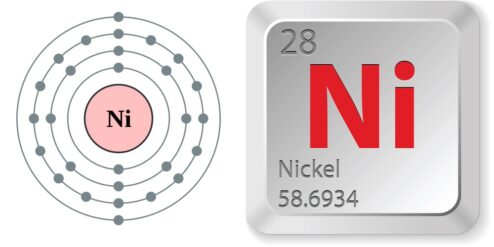Introduzione: The safety and nutritional value of canned tuna have been subjects of debate for years. One of the concerns that often arises is the potential presence of nickel in canned tuna. Nickel is a naturally occurring element that can be harmful in large amounts. This article aims to provide an in-depth understanding of the presence of nickel in canned tuna, the canning process and its role in nickel contamination, the comparison of nickel levels in fresh and canned tuna, the health implications of high nickel consumption, strategies for reducing nickel intake from canned tuna, and the role of regulatory bodies in controlling nickel in canned tuna.
Understanding Nickel in Canned Tuna
Nickel is a heavy metal that can be found in various food products, including canned tuna. This metal can enter the food chain through various sources, such as soil, water, and air pollution. In canned tuna, nickel can be present due to the fish’s natural diet or from the canning process. However, the amount of nickel in canned tuna is generally low and within the safe limits set by health authorities. It’s important to note that nickel content can vary depending on the type of tuna and the region where it was caught.
The Process of Canning and Nickel Contamination
The canning process can contribute to the nickel content in canned tuna. During canning, tuna is packed into cans which are then sealed and heated to kill bacteria and extend the product’s shelf life. If the cans used in the process are made of nickel-plated steel or if the solder used contains nickel, there’s a possibility of nickel leaching into the tuna. However, most modern canning processes use materials that minimize the risk of nickel contamination.
Comparing Nickel Levels in Fresh and Canned Tuna
When comparing fresh and canned tuna, the nickel content can vary. Fresh tuna typically has lower nickel levels because it hasn’t undergone the canning process, which can potentially introduce additional nickel. However, the difference is usually minimal and both fresh and canned tuna are generally considered safe to eat, as long as they’re consumed in moderation.
Health Implications of High Nickel Consumption
While nickel is a necessary trace element for the human body, excessive intake can lead to health problems. High nickel consumption can cause symptoms like nausea, vomiting, and diarrhea. Long-term exposure can lead to more serious conditions like lung and nasal cancer. People with nickel allergy can also have adverse reactions to foods with high nickel content. However, the amount of nickel in canned tuna is typically well below the levels that can cause health issues.
Strategies for Reducing Nickel Intake from Canned Tuna
If you’re concerned about nickel intake from canned tuna, there are several strategies you can adopt. First, you can opt for fresh tuna instead of canned. Second, you can choose canned tuna packed in water instead of oil, as oil can absorb more nickel. Third, you can rinse the tuna thoroughly before eating to remove any possible surface nickel. Lastly, consuming a varied diet can help ensure you’re not getting too much nickel from a single source.
The Role of Regulatory Bodies in Controlling Nickel in Canned Tuna
Regulatory bodies play a crucial role in ensuring the safety of canned tuna. These organizations set the maximum allowable limits for nickel and other contaminants in food products. They also conduct regular testing to ensure these limits are not exceeded. In addition, they enforce strict manufacturing practices to minimize the risk of contamination during the canning process.
Conclusioni: While the presence of nickel in canned tuna is a valid concern, it’s important to note that the levels are generally low and within safe limits. Consuming canned tuna in moderation as part of a varied diet should not pose a health risk for most individuals. However, people with nickel allergies or sensitivities should be cautious. Always consult with a healthcare provider if you have concerns about your diet and potential exposure to heavy metals like nickel.
Per approfondire:
- Nickel in the Human Diet and Its Significance: This article provides a comprehensive overview of nickel in the human diet.
- Nickel in Canned Foods: This study investigates the levels of nickel in various canned foods.
- Nickel Allergy: This resource from Mayo Clinic provides information on nickel allergy and its symptoms.
- Food Safety and Standards Authority of India – Nickel in Food: This document outlines the regulations for nickel in food products in India.
- FDA – Metals and Your Food: This page from the U.S. Food and Drug Administration provides information on metals in food, including nickel.


